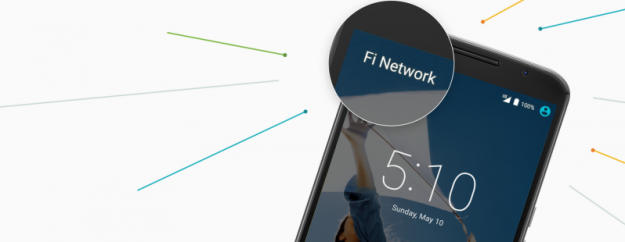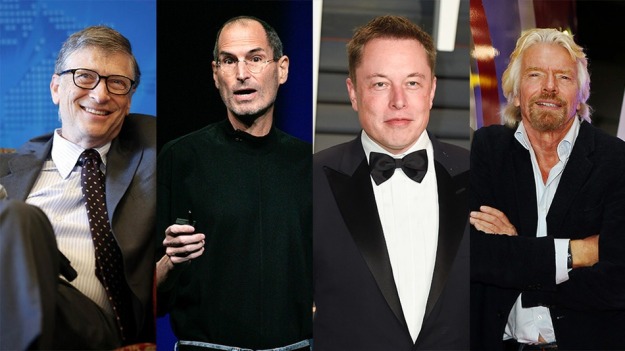„WhatsApp’s head office is among the most impressive you can find in start-up infested Mountain View, California, with glass walls cascading down from a rooftop patio that apparently glows at night.
You’d never guess that one of the most disruptive forces in the history of the telecommunications industry was housed inside.
Like the older, smaller digs it once frequented down the road on Bryant Street, there is no hint of corporate signage out in front. Just an abstract sculpture called “Caring” by California artist Archie Held, and a small Zen garden tucked in a corner of the lobby.
All very calming, but not for mobile carriers. This time last year, WhatsApp’s then-470 million users had already erased an estimated $33 billion in SMS revenue from wireless operators. That number is growing. Between 2012 and 2018 the entire telecommunications industry will have lost a combined $386 billion between 2012 and 2018 because of OTT services like WhatsApp and Skype, according to Ovum Research.
Today WhatsApp has more than 700 million people using it at least once a month, sending more than 10 billion messages a day. At its current rate of growth it should pass the 1 billion user mark before the end of 2015. The company doesn’t push through many updates. While other messaging apps like WeChat, Kik and Facebook Messenger host content and e-commerce services to become all-encompassing platforms, WhatsApp has limited its new features to communications.
Now the stakes for the world’s biggest messaging company are about to get much higher as it pushes through one of the most fundamental methods of communication out there: voice calling.
In February WhatsApp began rolling out the feature to select users across the world who could receive calls through the app. Receiving a call allowed them to make calls too. Then last week it offered an application file on its website which, if downloaded, allowed anyone with an Android phone to call other WhatsApp users.
The feature is expected to launch on Windows Phones and iOS phones soon, and already, around 20 million people including 2 million in Germany have been able to test it, says Pamela Clark-Dickson, a telecom analyst at Ovum Research, citing a source close to Facebook.
WhatsApp’s staff of approximately 80 people were spread thinly across three stories in their impressive 20,000 square foot building when I last visited in late 2014. The edgy graffiti that once adorned WhatsApp’s walls had taken on a more sophisticated, Banksy-like flavor inside: marking the third floor’s entrance was a huge mural of a woman riding a bicycle in Hong Kong, a reminder of WhatsApp’s international popularity.
WhatsApp had been living a hermetic, four-year existence in the Silicon Valley bell jar before Facebook swooped in and bought the company for $22 billion in February 2014. It continued that air of secrecy in the months afterwards, except now it was subject to a steady stream of visitors and it needed a pair of security guards to mind the entrance to its headquarters.
WhatsApp’s resources with Facebook were only just starting to converge in the wake of their landmark deal, with Facebook now helping with legal matters and public affairs. “We were very cheap when we were WhatsApp,” said Neeraj Arora, WhatsApp’s long-time business development head when asked about how money was being spent. “We’re more disciplined now because we are part of a public company.”
Yet Facebook’s largesse makes it easier to pull off big expansion plans. At the top floor, Arora pulled back one of the blinds and pointed to the roof of another building about a block away that was still under construction.
Milling about on top in ant-like proportions were half a dozen construction workers wearing bright yellow vests. This was WhatsApp’s next headquarters, scheduled to be ready for them to move in in 2015: an 80,000-square-foot colossus that would include a gym and a floor big enough for all departments to be together once again.
WhatsApp had actually leased the building before the Facebook deal, a confident move by the founders who fully believed that in three-to-five years they would have a workforce of around 500.
Today with big plans to become a comprehensive communications service and all-round-new-breed of phone company, that looks more likely than ever.
Though many of us already make free calls on Skype, Viber or Apple’s FaceTime, WhatsApp’s calling service stands to be the most popular of them all simply because it has the highest single number of active users.
“It has the potential to affect mobile voice revenues [for carriers] more so than LINE or Viber or even Skype, which is not that big on mobile,” says Clark-Dickson.
That’s troubling news for carriers like AT&T or Vodafone for two reasons. WhatsApp’s rise coincides with the gradual erosion of a carrier’s relationship with consumers, relegating them to the grey world of infrastructure inhabited by Cisco and Ericsson, packet-based networks whose primary role is to transport data.
It will also cost them revenue. Voice minutes are already falling across the industry, according to Ovum, which says mobile network revenues will contract for the first time in 2018 as over-the-top services like WhatsApp push us towards using data rather than voice minutes.
While mobile data revenues will grow by a compound annual rate of 8% to reach $586.4 billion globally in 2019, voice will decline by 3% over the same period, to $472.7 billion. North America and Western Europe will be hardest-hit with respect to mobile voice revenues, with these regions representing nearly 80% of the global voice revenue decline.
This points to the frustrating paradox for carriers: enormous growth but tighter margins. Consumers have developed an insatiable demand for data, Facebooking, YouTubing and Netflixing on their mobile phones at all hours of the day. Cisco predicts mobile data traffic will increase 11-fold from 2013 to 2018. But the average revenue per user (ARPU) for carriers is falling, because the cost of data is getting cheaper. Imagine McDonald’s customers buying 10 times more food, but only ordering french fries.
Data used to contribute a disproportionately high level of revenue in relation to traffic when it was mainly related to SMS. Back in 2005 for instance, someone sending 3,000 text messages was sending less than 0.1MB data per month. Now that load has increased into the gigabytes. ARPU for carriers has remained steady since 2010, but what’s changed is that data now makes up more than half of their total revenue, and overshadowed voice for the first time earlier this year.
Data is essentially devouring voice. T-Mobile and Verizon are already dealing with this by launching Voice over LTE which transforms a voice call into a data call, and doubling the amount of data available to customers for the same price.
With voice and SMS margins dwindling, carriers may eventually be forced to stick to flat-rate data plans which are being pioneered by younger operators like 3 and Tele2, and taking full advantage of their expensive new 4G networks. WhatsApp’s voice feature might not necessarily be a disaster for carriers if it boosts their data revenues further. But Clark-Dickson warns that “even if data traffic revenue increased, it would not go back to the old revenue days.”
What’s infuriating for carriers is how WhatsApp and its ilk can run a potentially profitable service on top of their expensive infrastructure. Just last year, carriers bid more than $40 billion on new wireless spectrum at a government auction for a high-band spectrum that could carry more data than usual. Good timing for WhatsApp’s voice plans, since the new spectrum will lead to smoother connections and less hiccups in the service, though it could take around two years for the faster data speeds to kick in.
For their part, Koum and his team have long insisted that WhatsApp is no enemy to carriers. Instead they’ve partnered with more than 100 of them around the world, asking carriers to not count the use of WhatsApp against their data allowance. In other words, when a customer’s data allowance runs out, they can still use WhatsApp. It’s unclear how those partnerships will develop when voice kicks in. T-Mobile has formed a similar partnership with Facebook and with music streaming, and the model is helping around half the world’s carriers improve their revenue prospects, according to one recent survey.
Still, some carriers have taken their time before getting on board with WhatsApp. It took a while, for instance, before leading Latin American carrier America Movil agreed to partner with the company.
WhatsApp has rolled out its voice feature in a characteristically slow and methodical way, introducing it to tranches of users at a time. Its founders Jan Koum and Brian Acton were more interested in making sure the service worked reliably than getting it out to their user base quickly.
Voice is trickier than messaging to do well. Real-time communications services have to contend with drop-outs and lags, as anyone who’s ever made a Skype call will know. That’s a big reason why WhatsApp is behind schedule on voice, according to people at the company. Co-founder Koum originally said the feature would be available in the second half of 2014, but it’s only just becoming available now.
For mobile operators, the extra time to prepare for what could be a major disruption to one of their most precious revenue sources is a small silver lining, says Clark-Dixon. “Mobile operators had 12 months to prepare and plan for this, so they know what’s coming,” she says. Still, she adds, “I don’t think operators have moved quickly enough.”
Carriers have increasingly bundled data, voice and SMS into a single rate, while operators like Vodafone and Sprint have signed up to the Rich Communication Services (RCS) standard, their own version of a web-based service to compete with apps like Viber and WhatsApp.
RCS, marketed under the name joyn, has been around for eight years. Yet until a year ago carriers offered these web-based services through their own third-party apps, says Clark-Dixon. Only recently have they started integrating them into an Android phone’s native dialler and texting applications. The number of people who have phones with the service are likely in the single-digit millions, she estimates, which means it could be too little too late to counteract the expected popularity of WhatsApp voice calling.
WhatsApp is still a ways off from being what you could call a phone company, with all the infrastructure and back-end billing and customer care services that entails. But it’s also graduating from the status of simple OTT player to a new kind of communications service provider. In the meantime, it should heed the mistakes of carriers who moved too slowly in the face of disruptive upstarts.
“We’ve been waiting a year for [WhatsApp voice calling] and it’s still only available on Android. It’s rolling out across market slowly,” Clark-Dickson warns, pointing to competitors like Viber, LINE and WeChat who have already have voice calling enabled for some time. “It needs to move more quickly in communications and with VoIP.”


























/cdn0.vox-cdn.com/uploads/chorus_asset/file/3614962/Sun-compared-to-Earth.0.0.jpg)
/cdn0.vox-cdn.com/uploads/chorus_asset/file/3614950/CLqdeKf.0.0.jpg)
/cdn0.vox-cdn.com/uploads/chorus_asset/file/3615226/PIA17936_fig1.0.jpg)
/cdn0.vox-cdn.com/uploads/chorus_asset/file/3614992/Jupiter-Earth-comparison.0.0.jpg)
/cdn0.vox-cdn.com/uploads/chorus_asset/file/3615246/17txyu27h0nx0jpg.0.jpg)
/cdn0.vox-cdn.com/uploads/chorus_asset/file/3615006/f0ba1pE.0.0.jpg)
/cdn0.vox-cdn.com/uploads/chorus_asset/file/3615024/B-KM7lRCYAARRK7__1_.0.0.jpg)
/cdn0.vox-cdn.com/uploads/chorus_asset/file/3615030/Kuiper_belt_-_Oort_cloud-en.svg.0.0.png)
/cdn0.vox-cdn.com/uploads/chorus_asset/file/3615040/star-sizes.0.0.jpg)
/cdn0.vox-cdn.com/uploads/chorus_asset/file/3615044/NS_MILKY_WAY_POSTER.0.0.jpg)
/cdn0.vox-cdn.com/uploads/chorus_asset/file/3615050/Screen_Shot_2014-12-28_at_12.32.45_PM_1.0.0.0.0.png)










